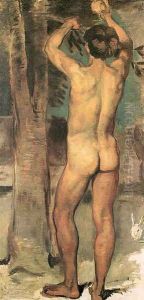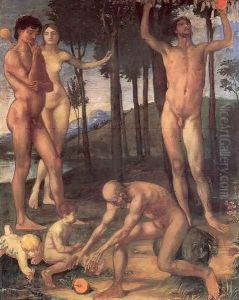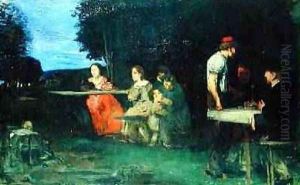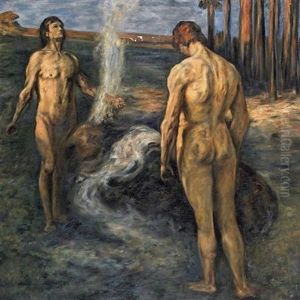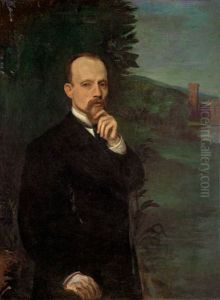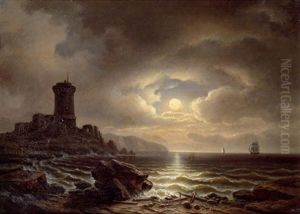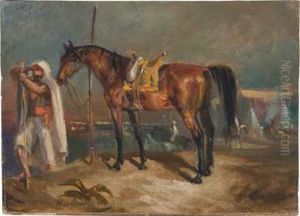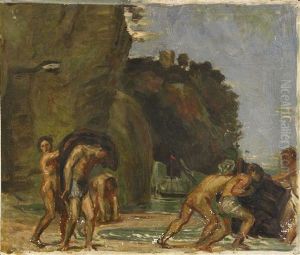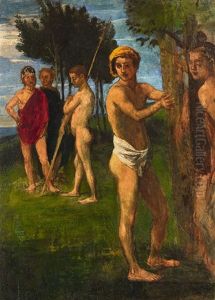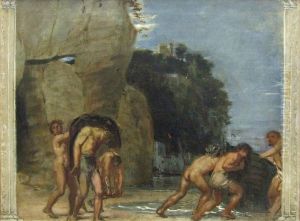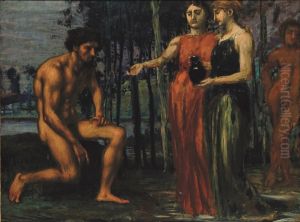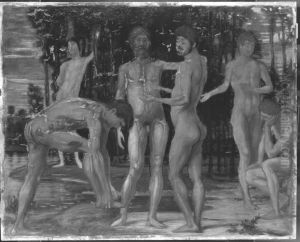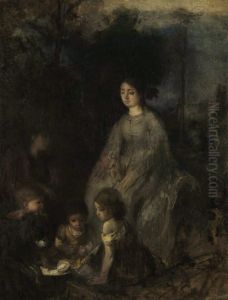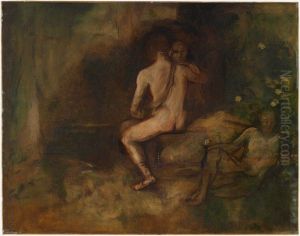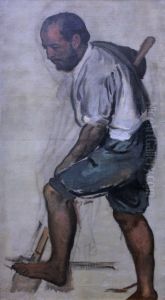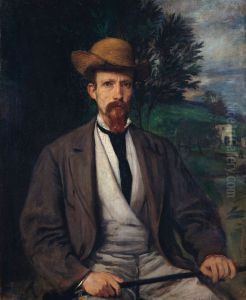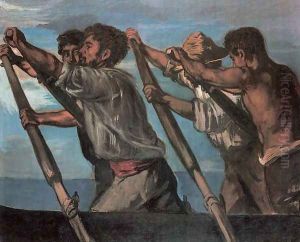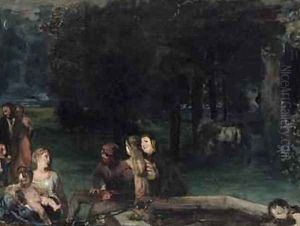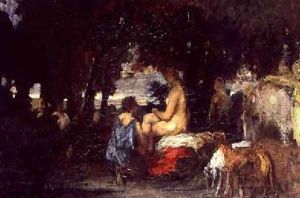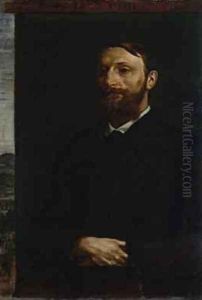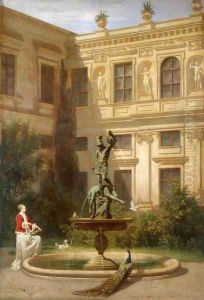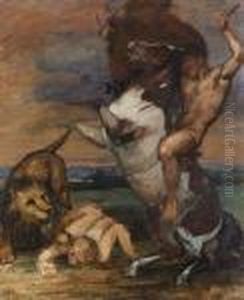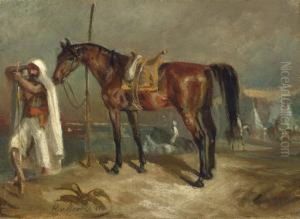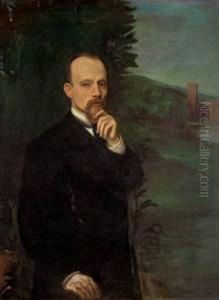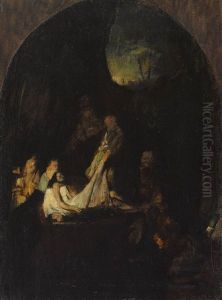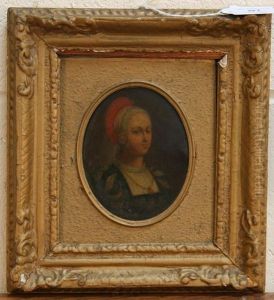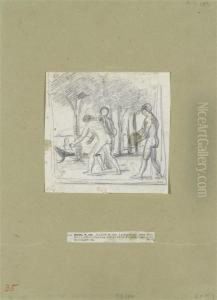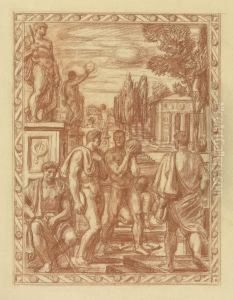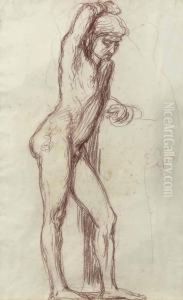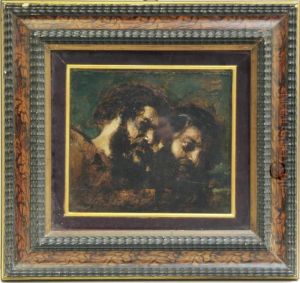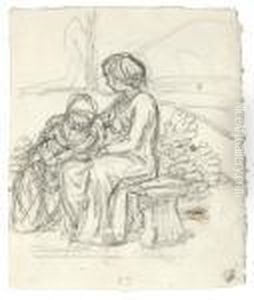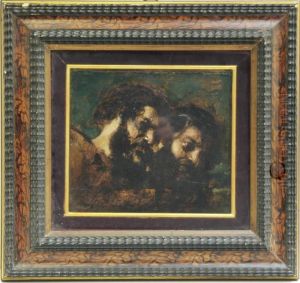Hans von Marees Paintings
Hans von Marees was a distinguished German painter who played a significant role in the development of modern art in Germany during the 19th century. Born on December 24, 1837, in Elberfeld (now part of Wuppertal), he was known for his unique style that diverged from the dominant academic painting of his time. His works often featured mythological or allegorical subjects and were characterized by a strong use of color and a focus on compositional harmony.
Marees studied art in Dresden and Berlin, and later in Antwerp and Munich, where he became part of a circle of artists that included Wilhelm Leibl and Franz von Lenbach, who were also striving to move beyond the constraints of academic art. In Munich, Marees was particularly influenced by the work of the Old Masters, which contributed to his evolving style.
In 1864, von Marees traveled to Italy, which had a profound impact on his artistic direction. He settled in Rome, where he was deeply inspired by the work of the Renaissance masters. During his Italian period, Marees developed a more monumental and simplified style, often emphasizing the sculptural qualities of his figures and the harmonious arrangement of forms within his compositions. His palette became more subdued, focusing on earthy tones and muted colors.
One of his most notable works from this period is the 'Züge des Lebens' (The Stages of Life), a triptych that explores the human condition through a series of symbolic figures and scenes. This work exemplifies his mature style and philosophical approach to art.
Despite his talent, Marees did not achieve significant commercial success during his lifetime, and he struggled financially. His work was better recognized posthumously, and he came to be regarded as a forerunner of modern art in Germany, influencing later generations of artists. Marees's contributions to German art were not limited to his paintings; he also left behind extensive theoretical writings on art, which further underscored his innovative thinking.
Hans von Marees died on June 5, 1887, in Rome, Italy. His legacy endures through his striking and contemplative works, which continue to be studied and admired for their distinctive approach to form, color, and composition.
